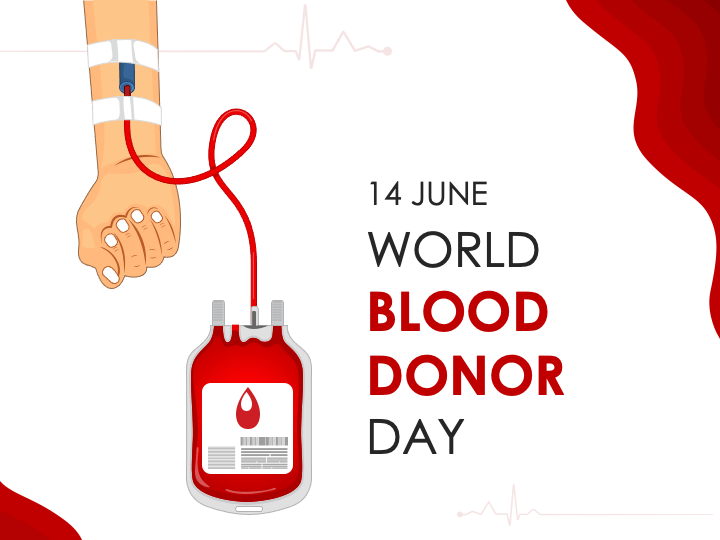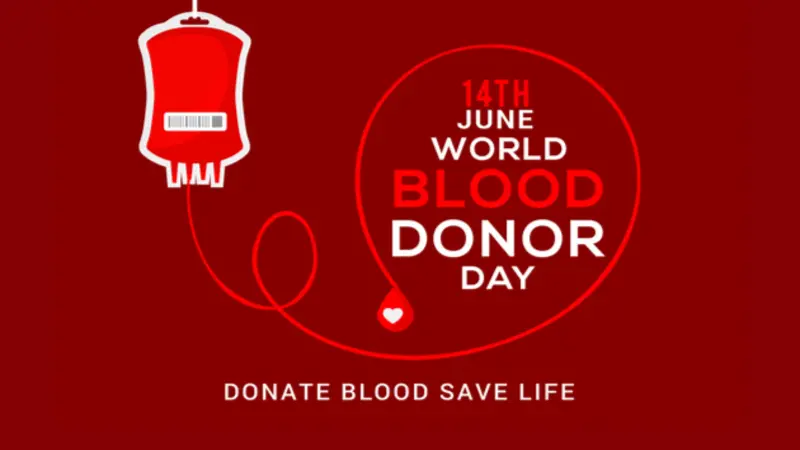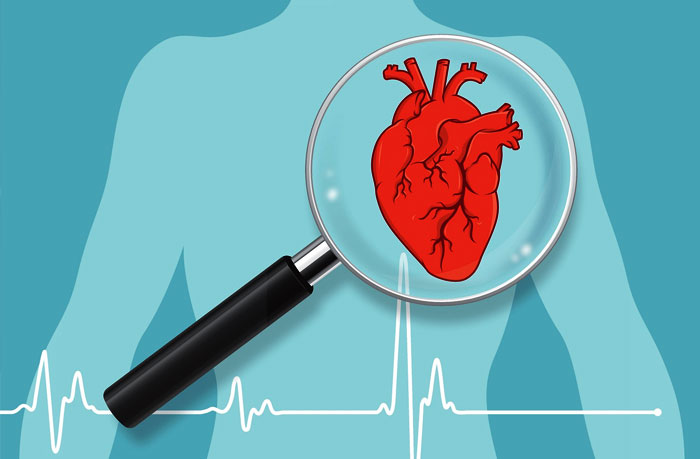World Blood Donor Day is an annual event celebrated on June 14th to raise awareness about the importance of voluntary blood donation and to recognize the life-saving contributions of blood donors worldwide. This day serves as a platform to highlight the critical need for safe and accessible blood supplies to support healthcare systems and save lives.
This article aims to provide a comprehensive overview of World Blood Donor Day, its significance, key messages, and the essential role of blood donors in promoting a healthier world
History and Significance of World Blood Donor Day:
1.1. Origin and Establishment:
World Blood Donor Day was first established in 2004 by the World Health Organization (WHO) and the International Federation of Red Cross and Red Crescent Societies (IFRC) to raise global awareness about the importance of safe blood donation.
1.2. Date and Theme:
World Blood Donor Day is celebrated annually on June 14th, commemorating the birthday of Karl Landsteiner, the Nobel Prize-winning scientist who discovered the ABO blood group system. Each year, a theme is chosen to focus on specific aspects of blood donation and its impact on individuals and communities.

The Importance of Safe Blood Donation:
2.1. Meeting the Demand for Blood:
Safe blood transfusion is crucial for various medical procedures, including emergency situations, surgeries, childbirth, and treatment of life-threatening conditions such as cancer and blood disorders. Adequate and safe blood supplies are necessary to meet the increasing demand and ensure timely access to blood for patients in need.
2.2. Quality and Safety Measures:
Safe blood donation involves rigorous screening processes and quality control measures to protect both donors and recipients. Screening for infectious diseases, including HIV, hepatitis, and malaria, ensures that donated blood is free from potential pathogens. Proper handling, storage, and transportation of blood and blood products are essential to maintain their integrity and efficacy.
2.3. Voluntary Non-Remunerated Blood Donation:
Promoting voluntary non-remunerated blood donation (VNRBD) is a fundamental principle of World Blood Donor Day. VNRBD ensures that blood donors give blood willingly, without any financial or other incentives, and emphasizes the altruistic nature of blood donation. VNRBD is recognized as the safest and most sustainable source of blood.
Key Messages of World Blood Donor Day
3.1. “Give Blood. Give Now. Give Often”:
This message highlights the urgency and frequency of blood donation. It encourages both new and regular donors to step forward and contribute to maintaining an adequate and safe blood supply.

3.2. “Safe Blood Saves Lives”:
This message emphasizes the life-saving impact of safe blood transfusion. It raises awareness about the critical role of blood donors in providing safe blood products that can save lives and improve health outcomes for patients worldwide.
3.3. “Be There for Someone Else. Give Blood. Share Life”:
This message focuses on the power of blood donation to bring people together and create a sense of community. It highlights the interconnectedness of individuals and encourages them to support one another through the act of blood donation.
Promoting Blood Donation
4.1. Encouraging Voluntary Blood Donation:
Governments, health authorities, and organizations play a crucial role in creating an enabling environment for voluntary blood donation. Initiatives such as awareness campaigns, educational programs, donor recruitment drives, and partnerships with community organizations help raise awareness and motivate individuals to become regular blood donors.
4.2. Overcoming Barriers to Blood Donation:
Addressing barriers to blood donation is essential to ensure a sustainable blood supply. These barriers may include misconceptions, fear of needles, lack of awareness, and logistical challenges.
Efforts to overcome these barriers involve targeted educational campaigns, addressing donor concerns, improving accessibility to donation centers, and streamlining the donation process.
Recognizing and Supporting Blood Donors
5.1. Donor Recognition and Appreciation:
World Blood Donor Day provides an opportunity to recognize and appreciate the selfless contributions of blood donors. Recognizing their generosity, bravery, and commitment can inspire others to become donors and create a culture of gratitude for blood donation.
5.2. Donor Health and Well-being:
Ensuring the health and well-being of blood donors is essential for sustained blood donation. Blood donor eligibility criteria, medical screening, and post-donation care are important components of donor safety. Regular communication, support, and follow-up help maintain a healthy donor pool.
World Blood Donor Day serves as a powerful platform to promote safe blood donation, acknowledge the significant contributions of blood donors, and raise awareness about the essential role of blood supplies in healthcare systems worldwide. By encouraging voluntary non-remunerated blood donation, improving donor recruitment and retention, and ensuring robust safety measures, we can create a healthier world where individuals have timely access to safe blood transfusion when needed. Let us unite in celebrating World Blood Donor Day and inspire more people to become life-saving blood donors.

























